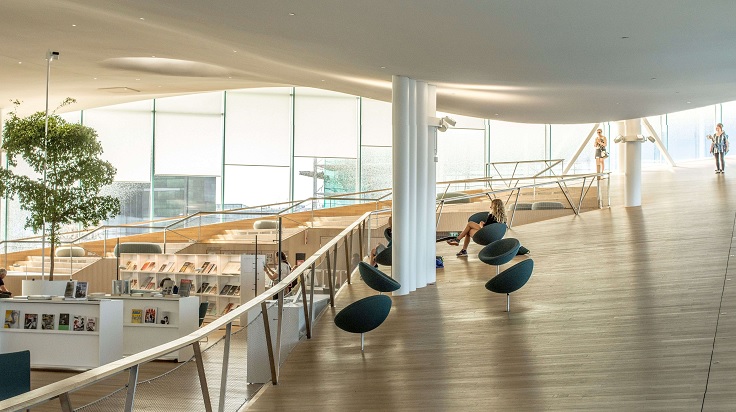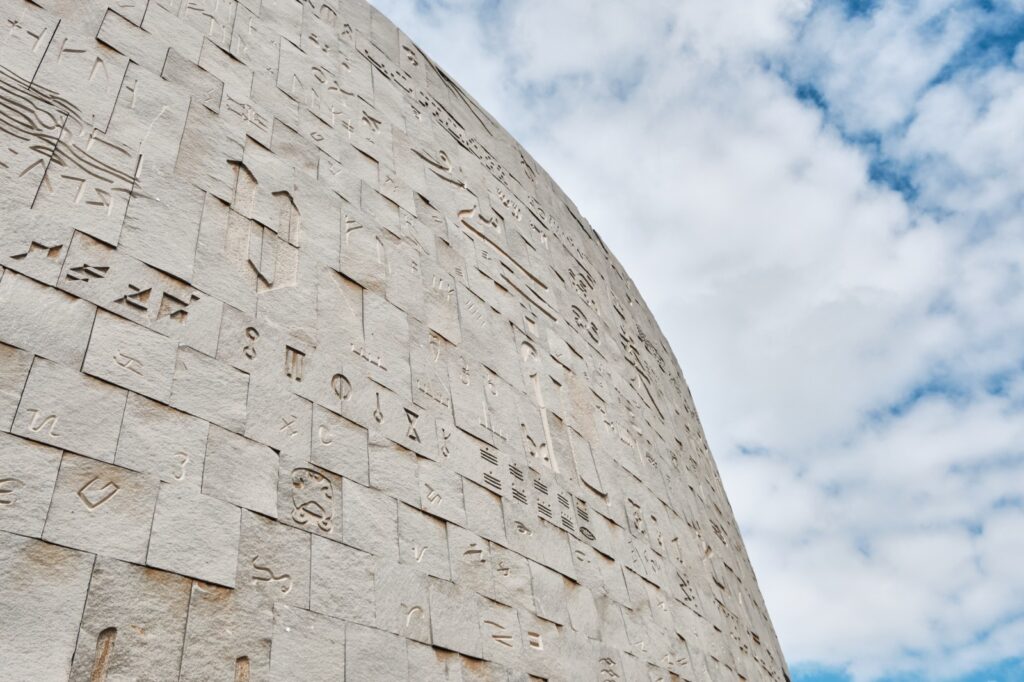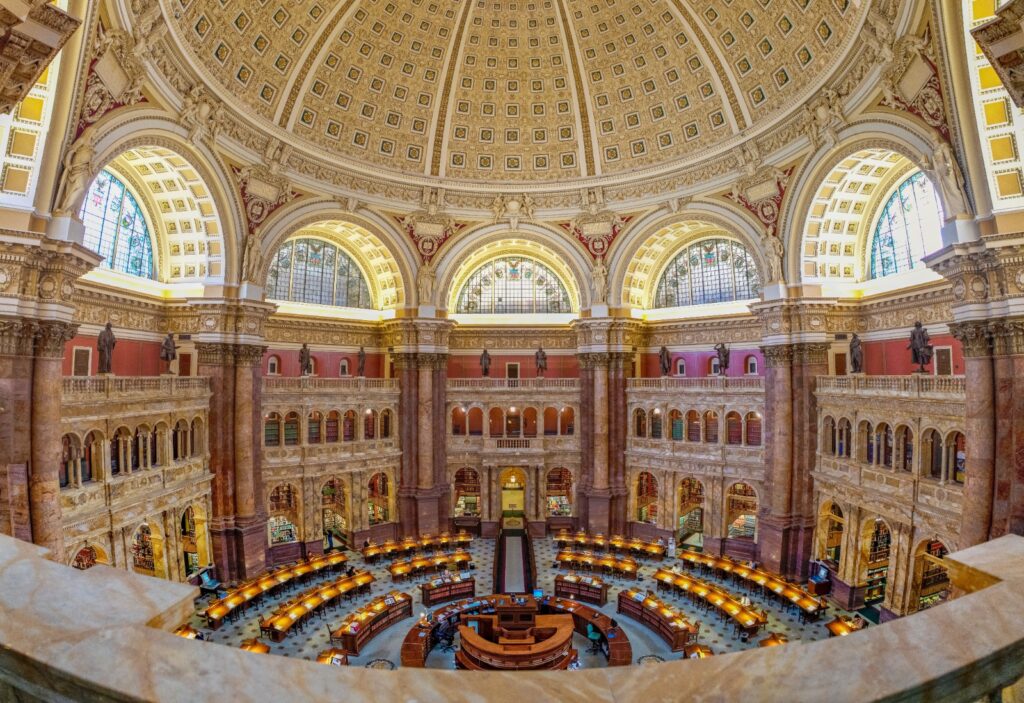Fantasy, imagination, creativity, emotion and literature. Throughout the centuries, libraries have been a source of inspiration for architects and designers worldwide. These buildings fulfil the function of storing and disseminating knowledge. However, they are also impressive works of art that reflect the culture and history of their location. Their importance as cultural buildings and their historical and architectural value make them spaces that encourage learning and creativity. As such they are highly valued in society.
Libraries have evolved considerably since ancient times when they were buildings that provided simple storage for manuscripts. They are now places where technology, education and culture come together under the same roof. Today, libraries are an integral part of urban life and have become meeting places for the community. Here, people can find refuge, socialise, reflect, learn and explore.

Illustration 1 Oodi Library, Helsinki, Finlandia – Unsplash Photo.
History and reconstruction of the Library of Alexandria
Alexandria was chosen by Alexander the Great as the capital of his empire in 331 BC. It soon became the most powerful and influential city in the region. Its sole aim was to build an empire of knowledge. The Library of Alexandria was a research centre that became one of the most important libraries in the ancient world.
It was destroyed on several occasions throughout history and thousands of books were lost. However, a modern day Library of Alexandria was built in 2002 on its original site.
Emanating a timeless and bold style, the carvings resulted from collaboration with artists Jorunn Sannes and Kristian Blystad. They used local stone cutting methods to create the façade. Distinguished by its circular, sloping shape, the building has a diameter of 160 metres and is 32 metres high. It also extends some 12 metres underground with a total area of 85,000 square metres.

Illustration 2: Exterior of the Library of Alexandria, Egypt – iStock Photo.
The Georgian architecture of Trinity College Dublin
In the heart of Dublin, Trinity College is Ireland’s oldest university. It has a long and proud history as one of the most outstanding examples of neoclassical architecture in Ireland. Founded in 1592 by Elizabeth 1st, it has housed illustrious students within its walls such as Jonathan Swift, Bram Stoker, Oscar Wilde and Samuel Beckett.
The library’s main façade features a monumental entrance crowned by a triangular pediment. This leads into a courtyard of stone arcades decorated with sculptures and reliefs. However, the library is most famous for its impressive main room. Known as the Long Room, it was designed by the architect Thomas Burgh in the 18th century. As such it is considered a magnificent example of Georgian architecture. The room is 14 metres high and has a barrel vault supported by Corinthian columns. In between these are the bookshelves adorned with marble busts of historical and literary figures.

Illustration 3 Image of the endless bookshelves and arches separating different spaces in Dublin’s Trinity College Library. – Unsplash Photo.
The modernism of the Stuttgart Library
Natural light, spaciousness, grey tones and geometry define the interior of one of the world’s largest public libraries. Inaugurated in 2011 and considered a masterpiece of modern architecture, it was designed by Korean architect Eun Young Yi.
It is characterised by the lively atmosphere created through a variety of media. In this way each different zone and level in the complex achieves its own special quality and atmosphere. The building has a glass and steel façade and its cube shape lends it an imposing and elegant style. The façade is divided into modules resembling library shelves This, paired with the interior design, matches the simple, geometric and well-structured concept of the exterior.
The main entrance to the library is through the lower part the building leading to a large hall with high ceilings. A spiral staircase leads to the upper floor where the reading rooms and bookshelves are located.
The main reading room is an impressive white, rectangular space with high ceilings. Its huge windows provide views of the city. The book shelves are at the back of the room, and readers can access them via elevated walkways running along its side walls.

Illustration 4: View of the elevated corridors and staircases connecting the different floors of the library. – Unsplash Photo.
Neoclassicism at the Library of Congress in the USA
Built over several periods, from 1897 to 1939, the Library of Congress is housed in three buildings on Capitol Hill in Washington. It is considered one of the finest examples of neoclassical architecture in the United States.
The library’s main façade has a monumental entrance with Corinthian columns and a grand staircase leading to the main entrance. Built in Italian Renaissance style mainly from white marble, it houses more than 170 million items. These include books, maps, recordings and photographs, making it the largest library in the world.
The Library of Congress’ Main Reading Room is one of its most impressive spaces. With high ceilings and large windows, its bookshelves are several stories high, reaching from floor to ceiling.
The building has several additional reading rooms each with its own architectural style. One such is the Senate Reading Room, along with the House of Representatives Reading Room and the Law Reading Room. All display a mixture of architectural styles that reflect the library’s rich history and evolution over time.

Illustration 5: Library of Congress, Washington DC, USA – iStock Photo.

